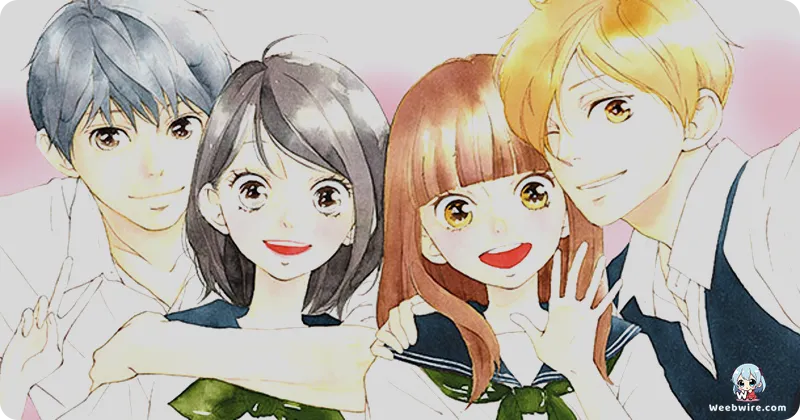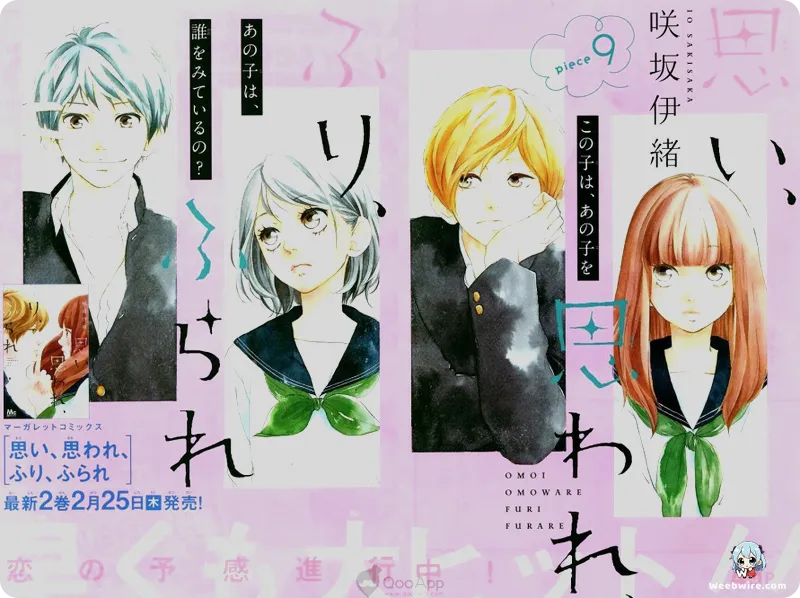Beyond the Heartbreak: Unpacking the Enduring Legacy of Io Sakisaka's 'Love Me, Love Me Not'

Dive into the profound emotional landscape of Love Me, Love Me Not, the internationally cherished shojo manga by Io Sakisaka, known in Japan as Omoi, Omoware, Furi, Furare. This captivating series, brought to life in a stunning 2020 anime film adaptation by A-1 Pictures, goes far beyond a typical high school romance. While its narrative of interwoven adolescent loves and friendships is widely celebrated, a closer look reveals intriguing facets and behind-the-scenes insights that deepen appreciation for this romantic drama. This article explores the lesser-known, yet compelling, dimensions of this beloved title, offering a fresh perspective on its enduring appeal and narrative brilliance.
The Profound Meaning Behind the Title
The very title, Omoi, Omoware, Furi, Furare, carries a profound meaning that encapsulates the entire saga. Translating approximately to 'Think, Thought, Reject, Rejected,' it perfectly articulates the complex, often unrequited, nature of love and affection explored throughout the story. This evocative title is a testament to Io Sakisaka's genius in distilling intricate human emotions into simple, yet potent, concepts. The narrative skillfully navigates not just who loves whom, but also the unspoken feelings, the hopeful yearnings, and the inevitable heartbreaks that define youthful romance. The title's structure itself hints at the cyclical and frequently unreciprocated dynamics of desire, resonating deeply with audiences who have experienced similar emotional labyrinths.
A Quartet of Complex Hearts: The Protagonists
Central to Love Me, Love Me Not is its dynamic quartet of protagonists: Yuna Ichihara, Akari Yamamoto, Rio Yamamoto, and Kazuomi Inui. Their interactions form a rich tapestry of emotional experiences, with each character embodying a distinct perspective on love and relationships. Yuna, the shy and idealistic dreamer, represents the innocent and often vulnerable side of first love. Akari, pragmatic and outwardly confident, grapples with a more mature, at times cynical, view of romance, frequently masking her true feelings. Rio, the charismatic heartthrob, is burdened by a complicated past that complicates genuine connection, while Kazuomi, the easygoing and supportive friend, initially appears detached but harbors a deep capacity for loyalty and quiet affection. Io Sakisaka's masterful storytelling avoids simplistic tropes, instead imbuing each character with layers of complexity and internal conflict, making their growth throughout the story genuinely earned and profoundly relatable.

Adapting a Masterpiece: A-1 Pictures' Vision
The anime film adaptation by A-1 Pictures faced the considerable challenge of condensing a sprawling manga narrative into a feature-length cinematic experience. This process necessitated careful selection and streamlining of plot points and character arcs. For manga readers, observing which pivotal moments were prioritized and how the story's essence was preserved despite necessary cuts offers a fascinating comparative study. Director Toshimasa Kuroyanagi and the A-1 Pictures animation team, celebrated for their work on diverse titles like Your Lie in April and Sword Art Online, brought their signature visual flair to Sakisaka's art style. They expertly captured the delicate emotional nuances and the vibrant, yet understated, aesthetics of the manga, translating them beautifully onto the big screen. The animation's ability to convey subtle expressions and the serene beauty of everyday settings significantly contributed to the film's immersive quality, allowing viewers to truly feel the characters' internal struggles and triumphs.
Io Sakisaka's Enduring Legacy
Io Sakisaka stands as a monumental figure in the shojo manga world, and Love Me, Love Me Not holds a significant place within her acclaimed bibliography, alongside Ao Haru Ride and Strobe Edge. A less discussed, yet consistent, thematic thread runs through her works: the profound exploration of unrequited love, the intricate complexities of friendship, and the transformative journey of self-acceptance. While each series features unique characters and settings, Sakisaka consistently refines and deepens her insights into these universal themes. Love Me, Love Me Not further solidifies her reputation for crafting emotionally resonant narratives that speak directly to young adults navigating the tumultuous waters of their first serious relationships. Her unparalleled ability to portray genuine human emotions, from exhilarating joy to crushing heartbreak, with such authenticity is a hallmark of her storytelling, making her a beloved figure among shojo fans worldwide.
The Unsung Hero: Yuuji Nomi's Musical Score
The anime film's musical score, composed by Yuuji Nomi, renowned for his contributions to Studio Ghibli films like Whisper of the Heart, played a crucial, though often understated, role in enhancing the narrative's emotional impact. The soundtrack subtly underscores the characters' feelings, moving seamlessly from moments of tender affection to poignant sadness. The careful selection of melodies and instrumentation expertly guides the audience through the story’s emotional landscape, fostering a more immersive and heartfelt viewing experience without ever overpowering the dialogue or animation. This meticulous attention to auditory detail is a testament to the production team's commitment to delivering a complete sensory experience, perfectly complementing Sakisaka’s narrative vision.
In conclusion, Love Me, Love Me Not is far more than a simple romance; it is a meticulously crafted exploration of human connection, vulnerability, and the intricate dance of emotions that define youthful love. From its deeply meaningful title and multi-faceted characters to the skilled adaptation by A-1 Pictures and the profound thematic consistency of its creator, Io Sakisaka, the anime film offers a treasure trove of interesting details for both new viewers and long-time fans to appreciate. These hidden depths ensure that the story continues to resonate, reminding us that the most compelling narratives often lie in the subtle interplay of hearts and minds. It’s a timeless tale that encourages introspection about our own experiences with love, friendship, and self-discovery, solidifying its place as a modern shojo classic.
Credits
Omoi, Omoware, Furi, Furare
Author
Io Sakisaka
Cover Art
Io Sakisaka
Studio
A-1 Pictures
Publisher
Shueisha
Producers





